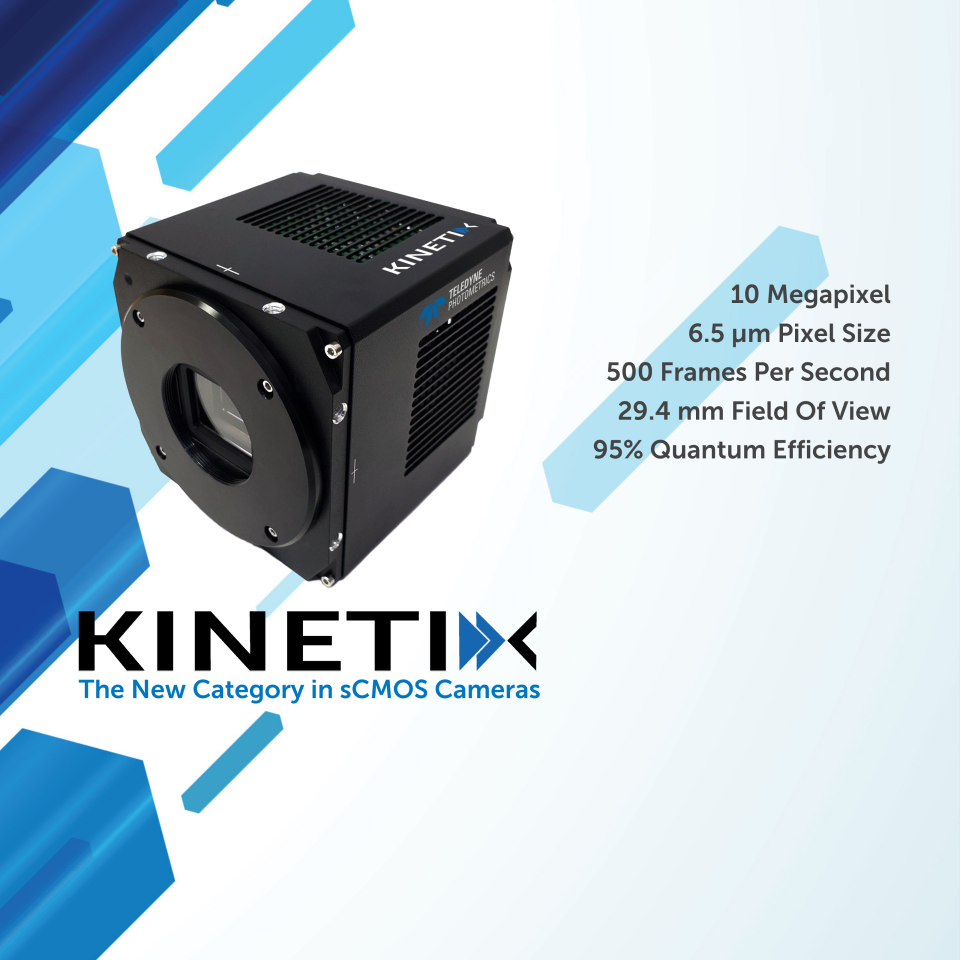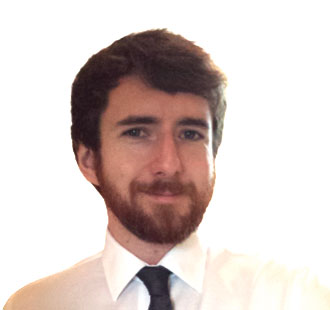About This Webinar
In this webinar, product and applications experts from Teledyne Photometrics are joined by leading imaging scientists to discuss how the latest developments in scientific CMOS (sCMOS) technology are opening up new possibilities in imaging. Previous generations of sCMOS and older technologies such as CCD and EMCCD needed to strike a balance using the classic “pyramid of compromise” between frame rate, sensitivity, field of view, and resolution. With the Kinetix sCMOS, striking this balance is no longer necessary.
The Kinetix delivers an unmatched combination of all these specifications with a speed that surpasses the expectations of a sensor this size. After an overview by the Teledyne Photometrics team, the conversation will be turned over to imaging experts to discuss how they are using the Kinetix to solve challenges from the high-speed collection of large, 3D volumes in live cells to the lowest-light single-molecule and superresolution imaging.

Who should attend:
You should attend this webinar if you are interested in seeing how the latest in scientific camera technology is being used to push the boundaries of what’s possible in scientific imaging. You will also learn about new, developing applications that take advantage of this improved imaging capability.
About the presenters:
 Dan Croucher, Ph.D., joined Teledyne Photometrics at the beginning of 2017 as an applications specialist and is the marketing manager for advanced microscopy. He completed his Ph.D. in biophysics at the University of Essex, U.K. His research was focused on the molecular interactions of heart muscle protein using a home-built TIRF microscopy system. Professionally, Croucher’s career has focused on scientific imaging technology, spanning both life and physical science applications using a full variety of scientific camera technology including CCD, EMCCD, CMOS, (em)iCCD, and InGaAs. At Teledyne Photometrics, Croucher uses his academic and imaging experience to be the principal connection between researchers and the product management team.
Dan Croucher, Ph.D., joined Teledyne Photometrics at the beginning of 2017 as an applications specialist and is the marketing manager for advanced microscopy. He completed his Ph.D. in biophysics at the University of Essex, U.K. His research was focused on the molecular interactions of heart muscle protein using a home-built TIRF microscopy system. Professionally, Croucher’s career has focused on scientific imaging technology, spanning both life and physical science applications using a full variety of scientific camera technology including CCD, EMCCD, CMOS, (em)iCCD, and InGaAs. At Teledyne Photometrics, Croucher uses his academic and imaging experience to be the principal connection between researchers and the product management team.
 As the product manager for life science research cameras at Teledyne Photometrics, Rachit Mohindra has been intimately involved with the development of scientific grade back illuminated CMOS cameras that have made a significant impact in single molecule detection and super-resolution microscopy. His experience in managing the design intricacies of award-winning CMOS and EMCCD cameras has given him a unique perspective on emerging light detection technologies and their expected impact on life science microscopy.
As the product manager for life science research cameras at Teledyne Photometrics, Rachit Mohindra has been intimately involved with the development of scientific grade back illuminated CMOS cameras that have made a significant impact in single molecule detection and super-resolution microscopy. His experience in managing the design intricacies of award-winning CMOS and EMCCD cameras has given him a unique perspective on emerging light detection technologies and their expected impact on life science microscopy.
Croucher and Mohindra will be joined by Elias Issa, Ph.D., Principal Investigator at Columbia University, Steven F. Lee, Ph.D., Reader in Biophysical Chemistry, University of Cambridge, and Kevin O'Holleran, Ph.D., Director of the Cambridge Advanced Imaging Centre, University of Cambridge.
About Teledyne Photometrics:
Teledyne Photometrics designs and manufactures high-performance scientific CMOS (sCMOS), CCD, and EMCCD cameras that support demanding, quantitative bioresearch. The original architect of the first scientific-grade EMCCD and the first to bring back-illuminated CMOS into scientific imaging, Teledyne Photometrics leads the way again with the Kinetix sCMOS — a new category in scientific imaging performance.